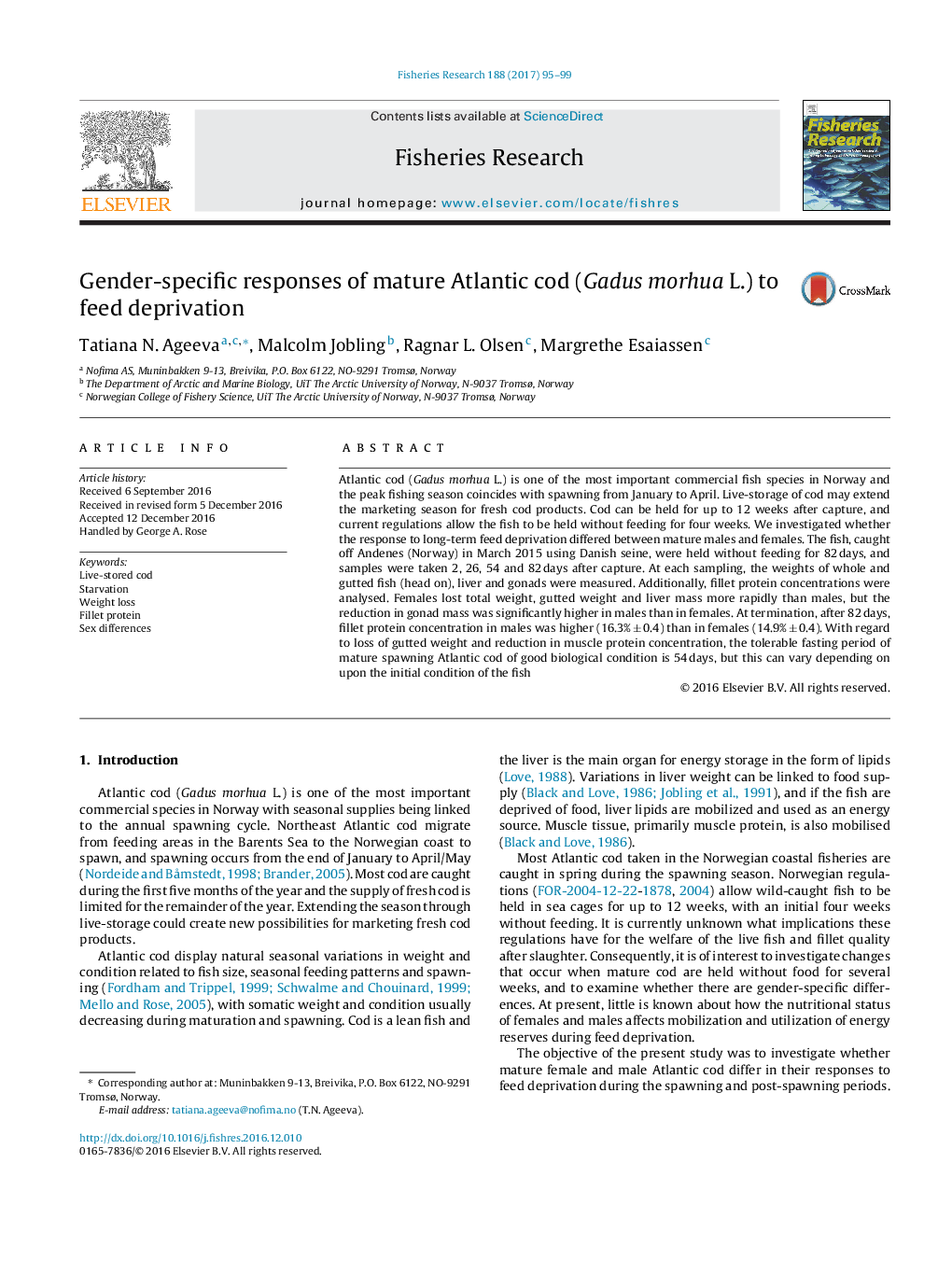| Article ID | Journal | Published Year | Pages | File Type |
|---|---|---|---|---|
| 5765595 | Fisheries Research | 2017 | 5 Pages |
Abstract
Atlantic cod (Gadus morhua L.) is one of the most important commercial fish species in Norway and the peak fishing season coincides with spawning from January to April. Live-storage of cod may extend the marketing season for fresh cod products. Cod can be held for up to 12 weeks after capture, and current regulations allow the fish to be held without feeding for four weeks. We investigated whether the response to long-term feed deprivation differed between mature males and females. The fish, caught off Andenes (Norway) in March 2015 using Danish seine, were held without feeding for 82 days, and samples were taken 2, 26, 54 and 82 days after capture. At each sampling, the weights of whole and gutted fish (head on), liver and gonads were measured. Additionally, fillet protein concentrations were analysed. Females lost total weight, gutted weight and liver mass more rapidly than males, but the reduction in gonad mass was significantly higher in males than in females. At termination, after 82 days, fillet protein concentration in males was higher (16.3% ± 0.4) than in females (14.9% ± 0.4). With regard to loss of gutted weight and reduction in muscle protein concentration, the tolerable fasting period of mature spawning Atlantic cod of good biological condition is 54 days, but this can vary depending on upon the initial condition of the fish
Keywords
Related Topics
Life Sciences
Agricultural and Biological Sciences
Aquatic Science
Authors
Tatiana N. Ageeva, Malcolm Jobling, Ragnar L. Olsen, Margrethe Esaiassen,
